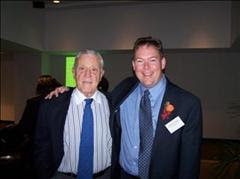(Mark Gail/THE WASHINGTON POST) - Esther Khai, right, takes part in an English lesson.
By Robert Samuels, Published: June 30
Laurel Conran filled a two-inch binder with vocabulary sheets for a class she offers Burmese refugees who work in a Howard County warehouse. The first lesson was on basic introductions, the second on American holidays. By Lesson 6, the topic was health insurance.
For this elementary school teacher, there is a compelling reason to volunteer as an English instructor for the region’s burgeoning Burmese refugee community: If you teach the parents, it helps you teach their children. She also has built bridges in other ways.
Driving to class one June day, Conran passed the Countryside Fellowship Church in Savage, where she has prayed with the parents. Then she passed two apartment complexes, where she has buzzed many of their doorbells.
“And do you see this hill in front of us?’’ Conran asked. “That’s where many of them walk to get to work.”
The hill leads to Coastal Sunbelt Produce, a fruit and vegetable distributor. This year, the company and Bollman Bridge Elementary School forged a learning partnership. Conran, who teaches English for speakers of other languages at the school in Savage-Guilford, now does the same for the company at lunchtime.
Most of the refugees work on assembly lines in a building cooled to temperatures in the 40s. Wearing skull caps and heavy jackets, they chop fruit, package it, seal it.
Conran walked into the cafeteria, filled with the aroma of curry dishes. About two dozen Burmese workers, mostly parents, were huddled in small groups around an English speaker, who was practicing with them how to call in sick for work.
Conran’s teaching partner hugged her. When the lessons started in May, the partner spoke no English.
“What is your name?” Conran asked.
“My name is Fam Chua.’’
“What is your job?”
Fam Chua furrowed her eyebrows, then said: “I . . . make . . . salsa.”
To read more of this Washington Post article, click here:
http://www.washingtonpost.com/local/education/for-burmese-refugees-english-lessons-at-work-build-school-ties/2011/06/23/AGPnxOsH_story.html
Way to go Laurel! Great article!

 The Common Core State Standards for Mathematics, STEM, and English Language Arts (ELA); Literacy in History/Social Studies, Science, and Technical Subjects (“the Standards”) are the culmination of an extended, broad-based effort to fulfill the charge issued by the states to create the next generation of K–12 standards in order to help ensure that all students are college and career ready in literacy no later than the end of high school. They are designed to provide a consistent, clear understanding of what students are expected to learn, so teachers and parents know what they need to do to help them. The standards are meant to be robust and relevant to the real world, reflecting the knowledge and skills that our young people need for success in college and careers.
The Common Core State Standards for Mathematics, STEM, and English Language Arts (ELA); Literacy in History/Social Studies, Science, and Technical Subjects (“the Standards”) are the culmination of an extended, broad-based effort to fulfill the charge issued by the states to create the next generation of K–12 standards in order to help ensure that all students are college and career ready in literacy no later than the end of high school. They are designed to provide a consistent, clear understanding of what students are expected to learn, so teachers and parents know what they need to do to help them. The standards are meant to be robust and relevant to the real world, reflecting the knowledge and skills that our young people need for success in college and careers. 






